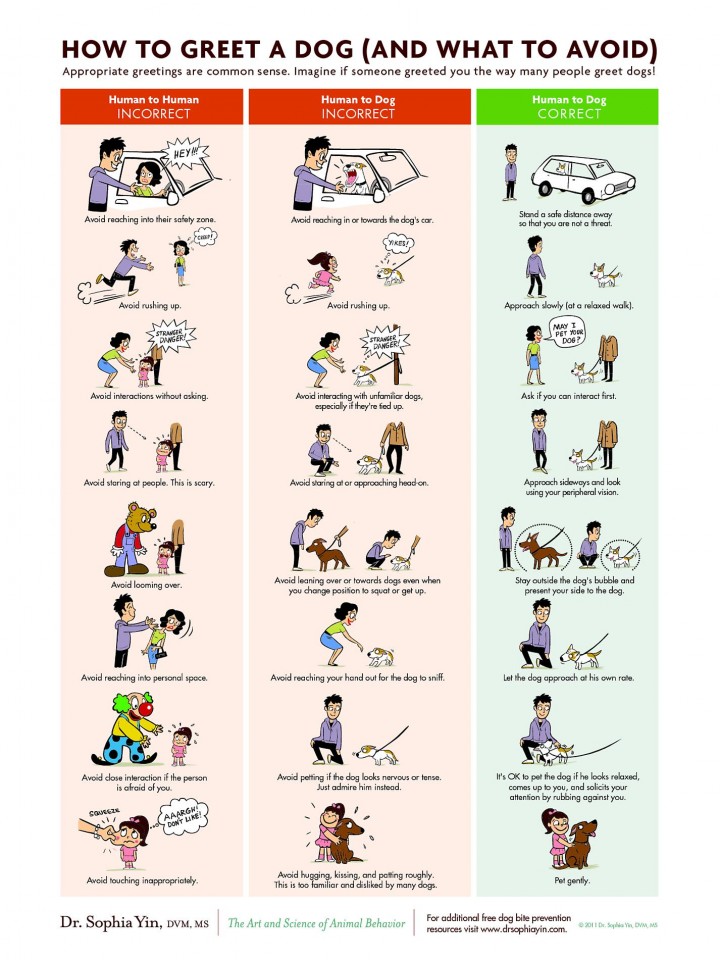This is a question that many dog owners dread. On the one hand, they may be grateful that at least the person asked, on the other hand if their dog is shy or fearful or simply uninterested in greeting new folks, they often feel put in a bind of either appearing rude or implying that their dog is aggressive or untrained by saying no.
For these owners, I highly recommend leash sleeves. There are numerous inexpensive iterations in safety yellow with messages including "In-Training, Do Not Approach," "I Need Space," "Ask To Pet" et al and some companies will customize the sleeve with your text. Leash sleeves are an easy, polite and non-confrontational way to alert the public that your dog might not want to interact from a distance before the question is even asked.
For those folks that are greeting unfamiliar dogs when given permission, it is still important to pay attention to the dog's "language." Does he really want to be touched? Is he seeking touch or merely standing politely by his owner? Becoming "dog aware" is truly vital to both responsible owners and those that are seeking to interact with unfamiliar dogs. Fortunately there are terrific websites with detailed explinations of dog language, among them www.ispeakdog.org.
So let's assume one has received permission, the dog appears friendly and comfortable: soft eyes and mouth, relaxed posture, we would basically want to greet them much as we would like to be greeted. Not many of us appreciate a yello yelled in our ear, a tight hug from a stranger, or a taller person leaning their face directly into ours. We do appreciate folks respecting our personal space, measured tones and distance, an offer of a handskake rather than a grab, in other words, an introduction that respects us both. Dogs are much the same. Crouching over them, putting our face directly into theirs, patting on the head, hugging, crowding and loud voices can all be distressing even to the most easy-going of dogs.
The below poster highlights the "good and bad" approaches to dog greetings. I would add that inviting a friendly dog to interact is often a terrific indicator of whether the dog truly wants to to get close. "Invites decrease bites" is a helpful saying, and we can invite, by "pat, pet, pause," pat our leg in welcome, should the dog respond and come to us, we can pet on a neutral part of the body such as the shoulder and then pause. Does the dog move away? Does the dog move in closer? If the dog doesn't come in the first place, there should be no attempt to physically interact with him. He may be friendly enough, but perhaps he is more interested in continuing his walk or sniffing about. If he comes, allows a quick pet, but then moves away or turns away, we respect that disinterest and consider the interaction complete. Only if we get the green light for continued interaction, the "melt" or lean inot us would we continue. So next time someone asks "Can I say hi to your dog?" I hope we can look to our dogs first for the answer and then ensure that introduction is respectful, safe and harmonious for all.
Article Courtesy of Gabriela Hubbard, CPTD, KA/Family Paws Parent Eucator
High Five Dog Training, LLC
www.highfivedogtraining.com


